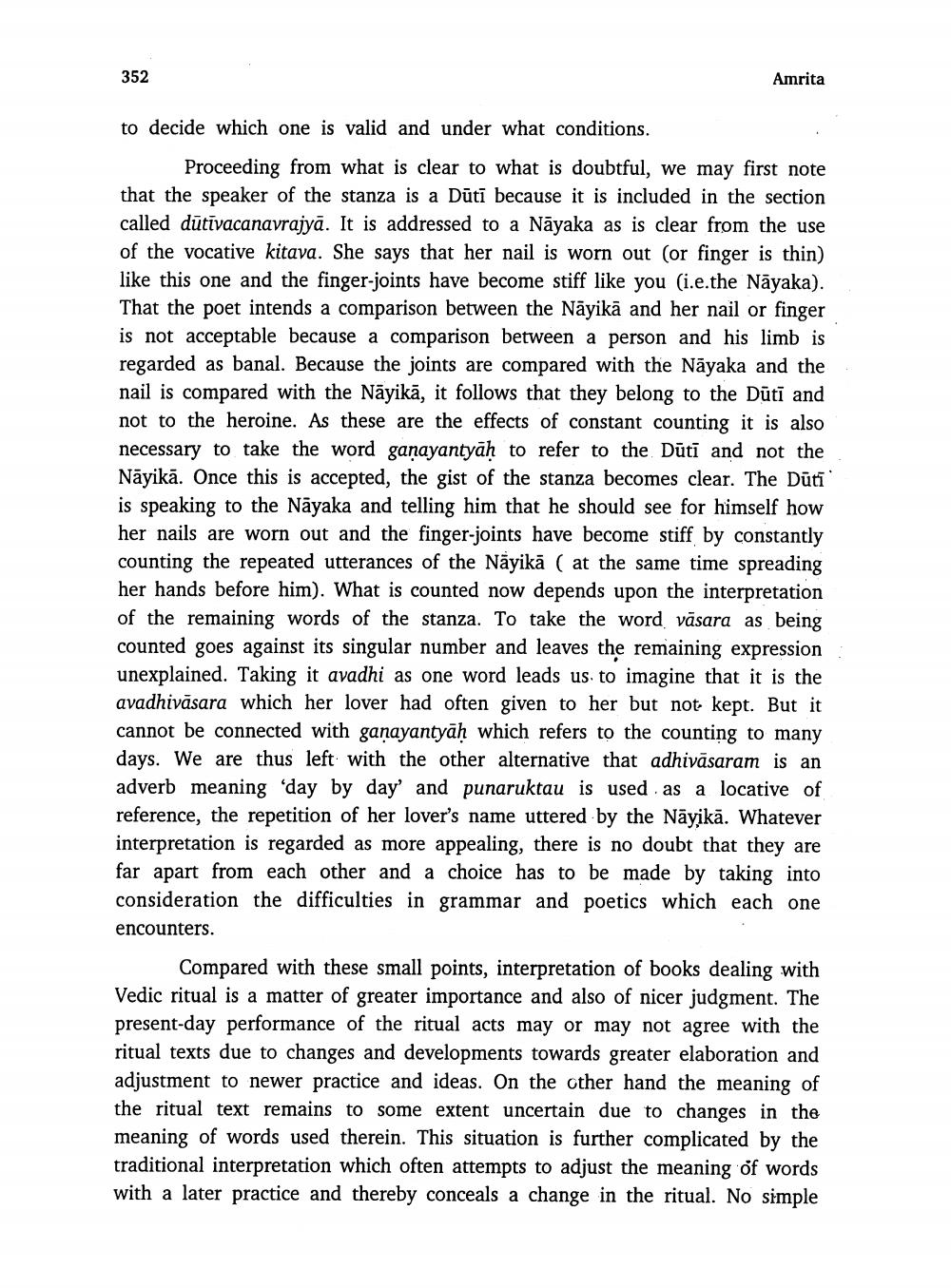________________
352
Amrita
to decide which one is valid and under what conditions.
Proceeding from what is clear to what is doubtful, we may first note that the speaker of the stanza is a Dūtī because it is included in the section called dūtīvacanavrajyā. It is addressed to a Nāyaka as is clear from the use of the vocative kitava. She says that her nail is worn out (or finger is thin) like this one and the finger-joints have become stiff like you (i.e.the Nāyaka). That the poet intends a comparison between the Nāyikā and her nail or finger is not acceptable because a comparison between a person and his limb is regarded as banal. Because the joints are compared with the Nāyaka and the nail is compared with the Nāyikā, it follows that they belong to the Dutī and not to the heroine. As these are the effects of constant counting it is also necessary to take the word ganayantyāḥ to refer to the Dūtī and not the Nāyikā. Once this is accepted, the gist of the stanza becomes clear. The Dūtī is speaking to the Nayaka and telling him that he should see for himself how her nails are worn out and the finger-joints have become stiff by constantly counting the repeated utterances of the Nāyikā ( at the same time spreading her hands before him). What is counted now depends upon the interpretation of the remaining words of the stanza. To take the word vasara as being counted goes against its singular number and leaves the remaining expression unexplained. Taking it avadhi as one word leads us to imagine that it is the avadhivāsara which her lover had often given to her but not kept. But it cannot be connected with ganayantyāh which refers to the counting to many days. We are thus left with the other alternative that adhivāsaram is an adverb meaning day by day and punaruktau is used as a locative of reference, the repetition of her lover's name uttered by the Nāyikā. Whatever interpretation is regarded as more appealing, there is no doubt that they are far apart from each other and a choice has to be made by taking into consideration the difficulties in grammar and poetics which each one encounters.
Compared with these small points, interpretation of books dealing with Vedic ritual is a matter of greater importance and also of nicer judgment. The present-day performance of the ritual acts may or may not agree with the ritual texts due to changes and developments towards greater elaboration and adjustment to newer practice and ideas. On the other hand the meaning of the ritual text remains to some extent uncertain due to changes in the meaning of words used therein. This situation is further complicated by the traditional interpretation which often attempts to adjust the meaning of words with a later practice and thereby conceals a change in the ritual. No simple




